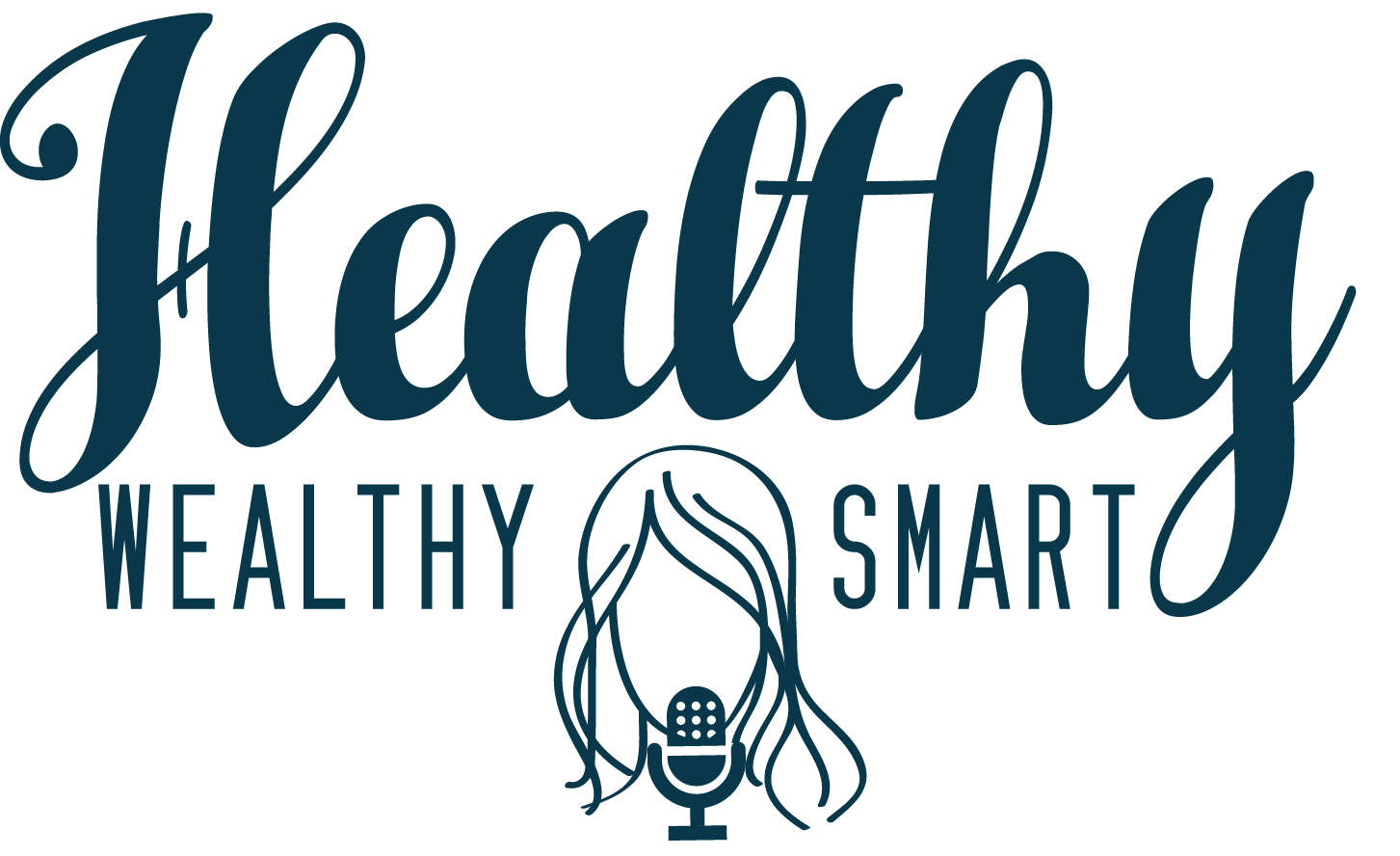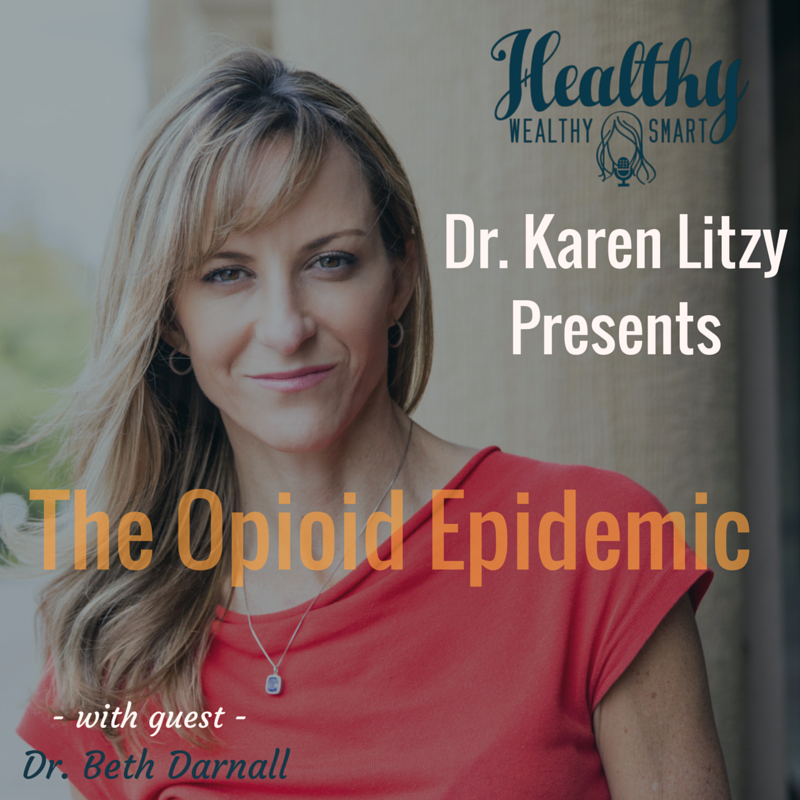Podcast: Play in new window | Download
On this week’s episode of the Healthy Wealthy and Smart podcast, Dr. Beth Darnall joins us to talk about the opioid epidemic and alternative treatments for patients experiencing chronic pain. Dr. Darnall is a Clinical Associate Professor in the Division of Pain Medicine at Stanford University and treats individuals and groups at the Stanford Pain Management Center. She is an NIH-funded principal investigator for pain psychology research that is examining the mechanisms of pain catastrophizing treatment, including a novel single-session pain catastrophizing class she developed (funded by the NIH National Center for Complementary and Integrative Health). She is dedicated to empowering life beyond pain.
In this episode, we discuss:
-The opioid epidemic and cost effective treatment solutions that you can incorporate into your care
-Tapering off opioid use, associated effects, and protocol
-How opioid use and chronic pain effect brain chemistry
-Pain catastrophizing defined and what patients can do if they have chronic pain
-And so much more!
Treatment for chronic pain with opioids alone is not sustainable and alternative treatment approaches are needed to retrain the brain. The research has shown that, “When we take opioids, it really changes brain chemistry. It actually changes the structure of the brain but so does chronic pain itself…[With alternative treatment,] you’re rewiring and recovering and exercise and enjoyment and going out and getting back to doing the things you love, these are going to help facilitate your brain as it is rewiring, as you’re managing pain differently, as you’re becoming more and more active and functional.”
Evidence based healthcare providers must monitor patients who begin opioid treatment for chronic pain and how their condition evolves. “We want to ask ourselves a critical question—are people getting better? And this is where we’ve really fallen short, opioids will be prescribed and nobody is tracking long term to see if they are getting better or if there are new risk factors or addictive behaviors. It’s a constant process of monitoring… We need to do better at stopping what isn’t working. If people aren’t getting better, if their pain is only worsening, let’s not add more of what isn’t working. Let’s stop it and emphasize the alternatives.”
Dr. Darnall supports the biopsychosocial model for treating chronic pain because it effectively and comprehensively targets the nervous system. She states, “The nervous system leads us into this area where we’re really talking about the modulation of pain, the facilitation of pain and the exacerbation of pain… No matter where you feel pain in your body, no matter how it got started or why, the processing of it will occur in the brain and spinal cord. That’s what we can target with some of these treatments and therapies, we’re able to dampen the experience of pain… The nervous system is a critically important part in helping decrease not only pain and intensity but more importantly how much a person suffers from pain. “
Dr. Darnall advocates a pain management approach that allows the patient to take more control in achieving a desirable outcome. She stresses, “The most important person on the healthcare team isn’t the doctor or the psychologist or the physical therapist—it’s the patient. If you have chronic pain, you are the most important person on your healthcare team. My hope and my wish is that every person on your healthcare team will have a similar philosophy that is focused on empowering you to acquire the right information and the right skills so you can best self manage your pain and your symptoms so that you’re able to become more functional, to enjoy more of the life you have even with the health
conditions you have so you’re able to live your best life possible.”
For more about Dr. Darnall:
 Beth is a Clinical Associate Professor in the Division of Pain Medicine at Stanford University and treats individuals and groups at the Stanford Pain Management Center. She is an NIH-funded principal investigator for pain psychology research that is examining the mechanisms of pain catastrophizing treatment, including a novel single-session pain catastrophizing class she developed (funded by the NIH National Center for Complementary and Integrative Health).
Beth is a Clinical Associate Professor in the Division of Pain Medicine at Stanford University and treats individuals and groups at the Stanford Pain Management Center. She is an NIH-funded principal investigator for pain psychology research that is examining the mechanisms of pain catastrophizing treatment, including a novel single-session pain catastrophizing class she developed (funded by the NIH National Center for Complementary and Integrative Health).
She is Co-Chair of the Pain Psychology Task Force at the American Academy of Pain Medicine (AAPM), and in 2015 received a Presidential Commendation from AAPM.
Beth is author of Less Pain, Fewer Pills ©2014 and The Opioid-Free Pain Relief Kit ©2016. Her upcoming book, The Surprising Psychology of Pain: Evidence-Based Relief from Catastrophizing and Pain is due out in 2017. As a pain psychologist, she has 15 years experience treating adults with chronic pain, and she lived through her own chronic pain experience. She enjoys helping individuals with chronic pain gain control over mind and body and live their best life possible.
Beth is a licensed clinical psychologist (CA License #25495).
Beth received her doctoral training at the University of Colorado at Boulder and her clinical residency at the Southern Arizona Veterans Affairs Health Care System (Tucson VA Hospital). She received post-doctoral training at The Johns Hopkins University School of Medicine Department of Rehabilitation Medicine and the Bloomberg School of Public Health (T32 Fellowship). Clinically, she provided psychological services to patients with catastrophic burn, spinal cord injury or amputation. She was an Associate Professor at Oregon Health and Science University (2005-2012) prior to joining the faculty at Stanford University in late 2012. Her desire to specialize in the management of chronic pain was inspired by her clinical experiences and by her own personal experience with chronic pain.
Make sure to grab copies of Dr. Darnall’s books The Opioid-Free Pain Relief Kit: 10 Simple Steps to Ease Your Pain and Less Pain, Fewer Pills: Avoid the Dangers of Prescription Opioids and Gain Control over Chronic Pain and follow her on twitter!
Resources mentioned in this episode:
Dr. Mark Carlson’s book: CBT for Chronic Pain and Psychological Well-Being: A Skills Training Manual Integrating DBT, ACT, Behavioral Activation and Motivational Interviewing 1st Edition
Dr. Beverly Thorn’s book: Cognitive Therapy for Chronic Pain: A Step-by-Step Guide 1st Edition
John Otis’ book: Managing Chronic Pain: A Cognitive-Behavioral Therapy Approach Therapist Guide (Treatments That Work) 1st Edition
Dr. Tonya Palermo’s book: Cognitive-Behavioral Therapy for Chronic Pain in Children and Adolescents 1st Edition
Thanks for listening and subscribing to the podcast! Make sure to connect with me on twitter to stay updated on all of the latest! Show your support for the show by leaving a rating and review on iTunes!
Have a great week and as always stay Healthy Wealthy and Smart!
Xo Karen
P.S. Do you want to be a stand out podcast guest? Make sure to grab the tools from the FREE eBook on the home page! Check out my latest blog post on Managing Expectations: It Shouldn’t be That Difficult!

